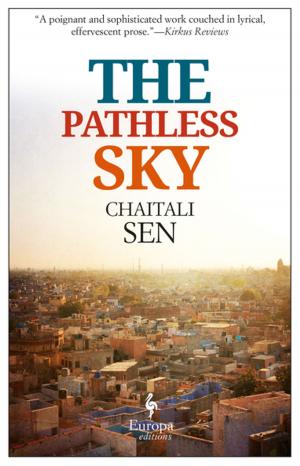The Roman Century: How a Determined People Launched the Greatest Empire in World History
Nonfiction, History, Ancient History, Rome, Business & Finance, Economics, Economic History, Military| Author: | Howard J. Erlichman | ISBN: | 1230000696302 |
| Publisher: | Howard J. Erlichman | Publication: | October 1, 2015 |
| Imprint: | Language: | English |
| Author: | Howard J. Erlichman |
| ISBN: | 1230000696302 |
| Publisher: | Howard J. Erlichman |
| Publication: | October 1, 2015 |
| Imprint: | |
| Language: | English |
The Roman Century: How a Determined People Launched the Greatest Empire in World History should be of interest to anyone who ponders the increasingly intense competition among the United States, China, Russia and emerging Islamic powers. The untimely death of Alexander the Great in 323 BC would not have caused anyone to predict that the 185-year-old Roman Republic was capable of outmaneuvering a number of powerful rivals -- Etruscans, Samnites, Celts, Epirotes, Carthaginians, Antigonids, Ptolemies and Seleucids -- and launching a multinational empire in 188 BC that would last, in its eastern form, until the fall of Constantinople in 1453.
The Roman federation of 323 was smaller in size than Los Angeles County, inhabited by less than 600,000 free citizens and woefully deficient in maritime affairs. Yet this modest regional enterprise proceeded in stepping-stone fashion to gain control of Central Italy (295), Southern Italy (272), Sicily (241), Sardinia (238) and large tributary slices of Spain (206), Tunisia (202), Macedon (197), Greece (191) and Anatolia (188) during the “long” 3rd century BC. The Romans advanced slowly and methodically. They borrowed ideas from their foes, masked their territorial ambitions with an innovative “protection-for-tribute” invasion model and generated a host of lessons to be studied by anyone interested in the processes through which overseas empires are won and lost.
The book is intended to serve as a very modern tale of military, economic and diplomatic history that just happens to be centered in the 3rd century BC. It explains how an unusually determined people adopted (and improved) a three-pronged blueprint of imperial conquest that had been laid-down by the Macedonians during the second half of the 4th century. The blueprint devised by Philip II and applied in grand fashion by his son Alexander combined brute military force, tributary finance and creative diplomacy into a new form of imperial power. But it was the Roman version, one infused with a fourth prong of pure resiliency, which ultimately launched (and sustained) the greatest empire in world history.
The Roman Century places the spectacular Roman advance in a much wider geo-political context than existing works; incorporates timeless observations from the likes of Appian, Arrian, Clausewitz, Diodorus, Livy, Machiavelli, Plutarch, Polybius, Sun Tzu and Thucydides; and describes the activities of some of the most remarkable warriors (and statesmen) of this or any age. All of this occurred nearly two centuries before Octavian (Augustus) Caesar became the first official Roman Emperor in 27 BC.
Howard J. Erlichman is also the author of Conquest, Tribute and Trade: How the Quest for Precious Metals Gave Birth to Globalization (2016/2010) and Camino del Norte: How a Series of Watering Holes, Fords and Dirt Trails Evolved into Interstate 35 in Texas (2006). He holds MS degrees from Harvard University and Rensselaer Polytechnic Institute and a BA in History (with Distinction) from Colby College.
The Roman Century: How a Determined People Launched the Greatest Empire in World History should be of interest to anyone who ponders the increasingly intense competition among the United States, China, Russia and emerging Islamic powers. The untimely death of Alexander the Great in 323 BC would not have caused anyone to predict that the 185-year-old Roman Republic was capable of outmaneuvering a number of powerful rivals -- Etruscans, Samnites, Celts, Epirotes, Carthaginians, Antigonids, Ptolemies and Seleucids -- and launching a multinational empire in 188 BC that would last, in its eastern form, until the fall of Constantinople in 1453.
The Roman federation of 323 was smaller in size than Los Angeles County, inhabited by less than 600,000 free citizens and woefully deficient in maritime affairs. Yet this modest regional enterprise proceeded in stepping-stone fashion to gain control of Central Italy (295), Southern Italy (272), Sicily (241), Sardinia (238) and large tributary slices of Spain (206), Tunisia (202), Macedon (197), Greece (191) and Anatolia (188) during the “long” 3rd century BC. The Romans advanced slowly and methodically. They borrowed ideas from their foes, masked their territorial ambitions with an innovative “protection-for-tribute” invasion model and generated a host of lessons to be studied by anyone interested in the processes through which overseas empires are won and lost.
The book is intended to serve as a very modern tale of military, economic and diplomatic history that just happens to be centered in the 3rd century BC. It explains how an unusually determined people adopted (and improved) a three-pronged blueprint of imperial conquest that had been laid-down by the Macedonians during the second half of the 4th century. The blueprint devised by Philip II and applied in grand fashion by his son Alexander combined brute military force, tributary finance and creative diplomacy into a new form of imperial power. But it was the Roman version, one infused with a fourth prong of pure resiliency, which ultimately launched (and sustained) the greatest empire in world history.
The Roman Century places the spectacular Roman advance in a much wider geo-political context than existing works; incorporates timeless observations from the likes of Appian, Arrian, Clausewitz, Diodorus, Livy, Machiavelli, Plutarch, Polybius, Sun Tzu and Thucydides; and describes the activities of some of the most remarkable warriors (and statesmen) of this or any age. All of this occurred nearly two centuries before Octavian (Augustus) Caesar became the first official Roman Emperor in 27 BC.
Howard J. Erlichman is also the author of Conquest, Tribute and Trade: How the Quest for Precious Metals Gave Birth to Globalization (2016/2010) and Camino del Norte: How a Series of Watering Holes, Fords and Dirt Trails Evolved into Interstate 35 in Texas (2006). He holds MS degrees from Harvard University and Rensselaer Polytechnic Institute and a BA in History (with Distinction) from Colby College.















